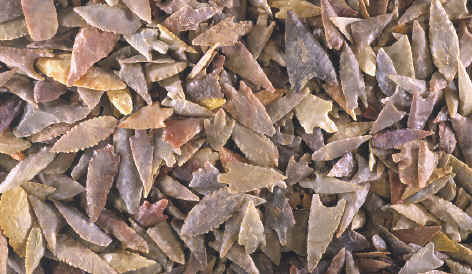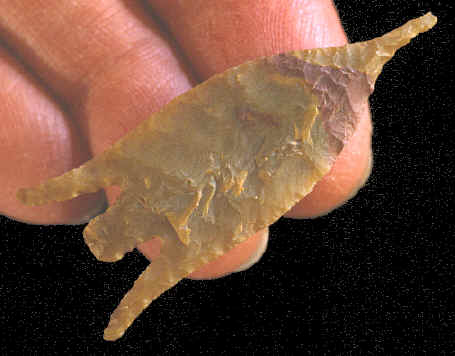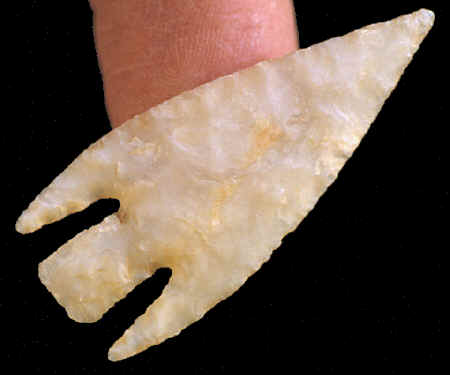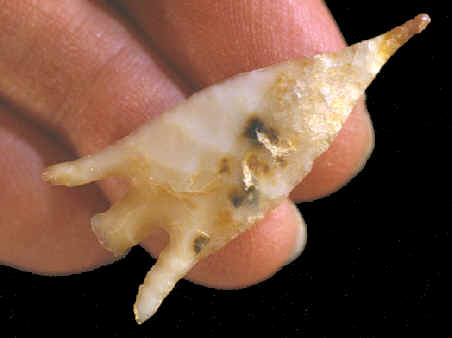|
|
|
Stone arrow heads from the Sub-Sahara region of Africa were made in almost every imaginable shape. The most impressive (artistic) examples are also the ones that required the most skill to manufacture. It's doubtful that everyone making stone arrow points during the Neolithic period would have had this skill level. But a few craftsmen seem to have taken stone arrow point making to the highest level in this region of Africa. Some of the better examples have oblique transverse pressure flaking. Others, like the Fan-Eared points illustrated in this article have extremely long delicate "ears" or barbs and "needle" points. |
|
|
Specific dating for all the various styles of arrow points from the Sub-Sahara region is not available. They date to sometime within the Neolithic period. The majority of them were probably made sometime between 5,000 B.C. to 3,000 B.C. |
|
|
Some of the Sub-Sahara arrow points are so "delicately" made that it's possible they were never meant to be used for hunting. Some of them may have been made for special uses such as burial offerings to the dead. If fan-eared points were domestically used, some of them have the appearance of being too fragile for that purpose. An ear or point would most certainly have broken after striking anything. Fan-Eared points seem suspiciously elaborate for normal use. But that doesn't mean they weren't used for that purpose. There were other cultures in the world that also made "fancy" projectile points for hunting. |
|
|
|
|
Ancient cultures always leave something behind for later people to ponder. The Sub-Saharan Fan-Eared points exhibit the skill and pride of craftsmen long gone. The stone survives to record their passing. |
|
|
"REFERENCES"
1971,
Clark, J. Desmond, "The Horizon History of Africa---African
Beginnings," p. 31. |
|



